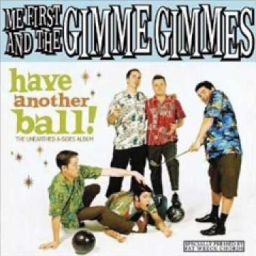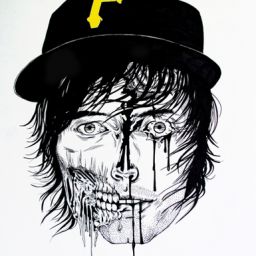[youtube=http://youtube.com/watch?v=PWqq2mgVOZs]
In the season finale of Grey’s Anatomy, Dr. Miranda Bailey breaks out with her mad Star Wars knowledge, both movie canon and the books, prompted by a patient referring to Han Solo. She then turns to her co-workers and declares “What, I’m a fan of sci-fi!” Why should she feel the need to defend her fannishness? Is it because she doesn’t fit the stereotype of who a fan should be — by being an African-American woman?
The possibility of female sci-fi fans seems so obscure to some that Megan McArdle has a blog post on the Atlantic.com about explaining science fiction to women.
She states that
A love for feminine frippery can be, and frequently already is, paired with a love of laser guns.
… talk about it as a fairy tale–only a fairy tale with science instead of magic. The basic emotional space it taps is the same. You might also try to ease her into something with a little more human emotion and a little less space opera.
In response, Iyla Somin at the Volokh Conspiracy concludes that a large part of the explanation is that such female science fiction fans just don’t exist — after all, if there was a market, of course it would be met fully:
If there were a large unment demand for feminist SF or other types of science fiction that may be of special interest to women, publishers and writers would have a strong incentive to meet it. The portrayal of women in science fiction has been debated for at least forty years, and publishers are certainly aware of the issue, and would act on it if they smelled profit. The underlying reality, I think, is that SF has less appeal to women than to men independently of the ideology of the writers and the way they portray female characters.
There are two interrelated assumptions that are made. First, that if female fans require non-misogyny in the fandom that this is the same as expecting these works to be feminist. This is a highly inaccurate assumption; while there are few action movies that would be considered to be feminist, there is a large difference between the non-misogyny of the first The Transporter and Batman Beyond (both movies with barely a female presence, yet with a large female fan following) and the super-sexist Bad Boys. The second assumption is much more insidious — that the only people seeking non-biased materials are those who would have the bias against them. I’d like to think that men would also like to not have their fandom with a side of misogyny.
I also laugh in the face of the idea that all female sci-fi/fantasy needs are being met. For example, if we judged anime based on what is seen on American television it would be as if an entire huge genre, shoujo (shojo), doesn’t even exist (invisibility!) — and according to the above argument, it is because no one would watch. The last shojo anime brought over from Japan, Cardcaptor Sakura, was a complete failure on television — not due to gender-based reasons such as focusing on relationships and costumes or having a large number of female characters, but because the show was plot-ignoringly edited to Cardcaptors.
Yet according to a 2001article, Sailor Moon graphic novels outsold Marvel’s Ultimate X-Men. There is a huge untapped market for this stuff! In response to market forces, some comic bookstores now are selling shojo books and related merch. And lest one think that it is only girls and women interested in these types of “girly” comics, the fact is we don’t know who could potentially be interested because of the ghettoizing of these materials as only “for girls”, often with the signifier of pink; leaving the “real” comics to males.
One of the writers for Sequential Tart, a online zine about comics from the perspective of women, Marissa Sammy writes about the frequent invisibility of women of color fans in a post called Becoming Visible: On Being a Woman of Colour in Fandom
Fandom, by and large, tends to be a white space. And people of colour (PoC) are, by and large, good at negotiating white space. We have to be. We speak the lingo and know the canon, and we do such a good job blending in online that we often … disappear.
I’m tired of being a visible minority in real life and an invisible one in fandom and online; I’m through with accepting the perception that I am never truly the Default.
I’m here. And so are you. Let’s make them see us.
The issue of invisibility for fans of color and women and women of color is of course not limited to science fiction and comics; in Keidra’s Bitch Magazine (and in the book!) article, Sister, Outsider, Headbanger, she writes about the difficulties and joys of being a African-American female metal fan:
if metal fandom is a great big family, I sometimes felt like a second cousin once removed. Though I was drawn to the outsider appeal of the music in the first place, it was difficult for me to forget my double outsider status at concerts, where guys would gawk and point at me and my metalhead clique as if we were Martians instead of black girls and we could count the number of black faces on one hand. But once the lights went down and the band came onstage, we were all headbanging and moshing and howling the words to the songs. The music took over, and we could all share that universal bond of loving the music, if only for a few hours.
Fans that are considered to be “different” or not the right type, can face anything from being leded as the “Unlikeliest Fans” in the case of yeshiva (Jewish religious school) fans of newer-metal band Disturbed — to being beaten for being Mexican emos.
Women, people of color, and especially women of color often need to wade through the negative portrayals of those like them or direct hostility to them to get to the tasty meat of fandom. And for some, that level of active filtering just isn’t worth it.
Note: I realize that there are a myriad of other aspects of invisibility in fandom, such as sexuality, disability, and age. We are planning to have at least two more posts in this series, focusing on creators and critics.




I love the way this comment breaks down why women and girls like me were drawn to X-men — and then moved away from it:
X-Men’s climb to prominence was in part because Chris Claremont… wrote women characters the same way other writers had always written men — they were allowed to be incredibly powerful, they were allowed to be leaders, they were allowed to have relationships with one another, they were allowed to have lives and angst that had nothing to do with men. And women ate it up, increasing X-Men’s market share by leaps and bounds that hadn’t been seen for *any* superhero property since Superman and Batman first came out. (Identifying a new audience that’s 100% of the size of your current audience, and marketing to them as well while not losing your original audience, will do that for you.) The 90’s did its best to erase Claremont’s influence by making Rogue less a terrorist trying to reform and more a sad untouchable damsel, forgetting Storm was the most badass superhero ever, and making Jean Grey practically a housewife, but trust me, this is not because *women* don’t understand or enjoy superheroes.
Salon comment here
[…] I’ve previously written, the exclusion of some people from inclusion in their fandom based on race/ethnicity or gender is […]